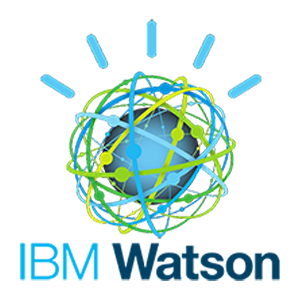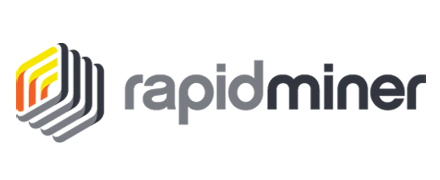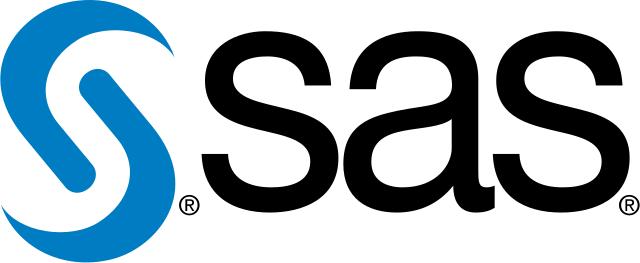Anyone running a business wants to predict its future. Though it is not possible exactly to some extent, you can get an estimation because business comes with uncertainty and risks that can not be avoided but can be minimized using Predictive Forecasting.
Predictive Forecasting is an extension of forecasting that guides companies to grow more profitable and respond quickly to changing circumstances and new business developments. It uses historical data and predicts future trends to help you make better business decisions and stay ahead of the competitors.
Predictive Forecasting helps to identify and process the relevant data needed to deliver an unbiased view of the future. In this article, you will learn about Predictive Forecasting and how it impacts business growth. Also, read about Predictive Forecasting tools and what are its common applications
Table of Contents
What is Predictive Forecasting?
Predictive Forecasting is an extension of forecasting. It is a process of estimating or predicting the future outcome based on the data that has been collected over the years to train the Machine Learning models and use Artificial Intelligence to forecast upcoming events and their probabilities. It can be used in finance, Marketing, human resources, and other departments of a company.
It is widely used in business forecasts to minimize the risk of making wrong business decisions and instead leverage data-driven decisions to substantially grow more. It is used to identify new relationships based on the new data and enrich the available data as well to provide better forecast results.
Key Features of Predictive Forecasting
Some of the features of Predictive Forecasting are listed below.
- Predicts Future Events: It helps in predicting future business events that help in making arrangements for future events and making better decisions.
- Depends on Historical Data: It makes use of historical and present data that takes all the factors into account to make better decisions.
- Reducing Risk: It helps in identifying future trends and makes it easier for businesses to detect out-of-the-ordinary scenarios before that helps in reducing the risk.
Hevo helps you migrate your data from multiple sources to a single destination, creating a single source of truth. Easily make your data analysis ready for your data visualization.
- Seamless Integration: Consolidate data from multiple sources into one destination.
- Single Source of Truth: Ensure accurate and consistent data for your analysis.
- Analysis-Ready Data: Transform and prepare your data for immediate use.
Experience hassle-free data migration with Hevo. Explore Hevo’s capabilities with a free personalized demo and see how you can benefit.
Get Started with Hevo for FreeForecasting vs Predictive Forecasting
Forecasting and Predictive Forecasting sounds similar to one another but they both have 2 different problem-solving techniques. So let’s look at the differences between the both, listed below:
Forecasting
Have you ever tried to guess something based on previous experience? Forecasting means making predictions and it is a technique that helps in predicting the future value of the specific data by looking at the particular trends. Forecasting can be done using qualitative or quantitative approaches.
- Qualitative Forecasting: It uses detailed data from the selected dataset to forecast future trends. For example, using in-depth knowledge or information of a Sales representative of customer accounts.
- Quantitative Forecasting: It uses quantitative correlations with other influencing variables of the data that should provide a solid statement on the attainability of the pre-defined or existing goals and point out the need for action within a company.
Predictive Forecasting
Predictive Forecasting is an extension of classic forecasting. It takes into consideration multiple variables of inputs, values, cycles, trends, and fluctuations of the dataset used to analyze and provide predictions in different areas of the business.
It is an essential and powerful approach that aids in providing better support to the organization and business activities. Moreover, it also helps in planning and enterprise performance management processes.
| Aspect | Forecasting | Predictive Forecasting |
| Definition | Predicts future values using trends and past data. | Extends forecasting with multi-variable analysis. |
| Approach | Uses qualitative and quantitative methods. | Incorporates cycles, fluctuations, and broader patterns. |
| Scope | Basic trend analysis and goal assessment. | Strategic planning and enterprise performance. |
| Complexity | Simpler, focuses on singular variables. | More complex, data-driven with multiple variables. |
| Application | General predictions for business or trends. | Advanced insights for better business decisions. |
Predictive Forecasting vs Predictive Analytics
Both Predictive Forecasting and Predictive Analytics can be used to boost your business activities such as supply chain management. The tools for both allow companies in improving their profit margins.
Predictive Forecasting tools help get an overview of the historical data from the dataset whereas Predictive Analytics tools help in identifying purchasing trends of the product.
Predictive Forecasting helps in predicting the levels of stock you should keep in a particular season or month based on your previous year’s purchases. If you are selling 1000 items in July for 4 years in a row then it is most likely that you sell 1000 items in July this year, so you need to keep stock accordingly.
Whereas, Predictive Analytics helps you in managing inventory based on customer behavior and how people think. It helps in identifying if something major changes happened in the industry that will drastically change the way people think and their needs of buying a product.
Like at the times of Christmas the sale of lights and home decor products boosts as compared to other months of the year.
Another example is if a company is launching a new product next month then people will stop buying products and wait for new ones to buy. These all changes in the Sales can be estimated with the help of Predictive Analytics.
| Aspect | Predictive Forecasting | Predictive Analytics |
| Purpose | Predicts future trends using historical data. | Analyzes customer behavior and external factors. |
| Focus | Inventory planning based on past patterns. | Adapting to changes in customer needs or industry. |
| Example | Stocking 1,000 items in July based on past sales. | Preparing for shifts like Christmas sales trends. |
| Application | Ensures consistent stock levels. | Adjusts strategies to match demand and market shifts. |
Top Predictive Forecasting Tools
Some of the commonly used Predictive Forecasting tools are listed below:
IBM Watson Studio

IBM Watson is a leading Predictive Forecasting tools vendor in the industry that uses top statistical and analytics packages to predict trends. The platform simplifies Forecasting for Data Scientists and business users.
Power BI

Power BI is one of the widely used tools for Forecasting and in-depth analysis. It leverages different Machine Learning algorithms to help manage the complete lifecycle.
RapidMiner Studio

RapidMiner Studio comes with a comprehensive set of Forecasting tools around its core data mining. It features notebooks for the development of Predictive Forecasting models.
SAS

SAS is one of the oldest Forecasting tool vendors. The core offerings of Predictive Forecasting include SAS Visual Data Science, SAS Visual Data Decisioning, and SAS Visual Machine Learning.
Use of Predictive Forecasting Tools
Companies use various techniques for Predicting the trends using Predictive Forecasting tools that saves time and helps in getting in-depth insights into the data. Some of the common uses of tools are listed below.
Demand Prediction
Companies need to have an estimated idea of how many stock levels are to be maintained in the market for healthy flow and Sales of the products. Accurately calculating and predicting the demand helps in optimizing the revenues and allows companies to anticipate the production volume and stock levels to satisfy the customer demands.
Inventory Management
Customer Experience is one of the vital factors for running businesses. Generating better-predicted outages, maintenance windows or breakdowns, and avoiding product shortages helps in improving the customer experience. Also, this helps in avoiding additional loss in revenue even decreasing the inventory costs.
Identifying Growth Drivers
Predictive Forecasting helps companies in understanding what factors drive revenue growth. It makes it easier for companies to focus more on investments that aid in boosting the growth of the company.
Workforce Planning
Keeping an estimate of the demand helps companies in managing the levels of the right staff, training new employees, etc.
Benefits of Predictive Forecasting
Some of the common applications of using Predictive Forecasting for making data-driven decisions and running your business effectively are listed below.
- Identifying Order Abandonment: Around 85% of the online orders are abandoned, which is a staggering figure. Poor customer experience, low-quality products, or no customer support leads to the cancellation of products and services. Companies use Predictive Forecasting models to increase the chances to prevent the loss of revenue and gain customer trust by improvising the red areas of their business.
- Reducing Risk: Running a business always comes with some amount of risk. All you can try is to minimize that risk by applying different strategies, planning, making budgets, managing inventory, etc. For this, Predictive Forecasting can help in making better business decisions. It helps in gaining actionable insights and making accurate decisions to increase profits in changing circumstances.
- Social Media: Social Media reputation plays a vital role in gaining customers and their trust. Nowadays most of the traffic comes from Social Media and companies need to provide a better user experience to them. Companies can tie up with Social Media influencers that can help them in increasing their sales. You can identify influencers who can perfectly align themselves with your business goals.
- Optimize Marketing: Marketing is all you need to sell your product to the customers but optimizing your Marketing helps in increasing the return on their investment. Companies can identify the customers who are most likely to buy the product and send them E-Mails for retargeting instead of sending E-Mails to all.
Conclusion
In this article, you learnt about Predictive Forecasting and how it is different from Predictive Analytics. Also, you read about its different applications and the use of its tools. It helps in giving a competitive edge in business.
Companies need to analyze their business data stored in multiple data sources. Data needs to be loaded to the Data Warehouse to get a holistic view of the data. Hevo Data is a No-code Data Pipeline solution that helps to transfer data from 150+ data sources to desired Data Warehouse. It fully automates the process of transforming and transferring data to a destination without writing a single line of code.
Want to take Hevo for a ride? Sign Up for a 14-day free trial and simplify your Data Integration process. Do check out the pricing details to understand which plan fulfills all your business needs.
Share your experience of learning about Predictive Forecasting in the comments section below!
Frequently Asked Questions
1. What is prediction and forecasting?
Prediction refers to making an estimate about a future event or outcome based on current and historical data while forecasting Specifically involves estimating future trends based on past and present data, often used in contexts like economics, finance, supply chain management, and demand planning.
2. What are the three types of forecasting?
Qualitative (expert opinions), quantitative (mathematical models), and time-series (historical data patterns).
3. What are the three types of prediction?
Classification (categorical outcomes), regression (continuous outcomes), and clustering (grouping data points).




